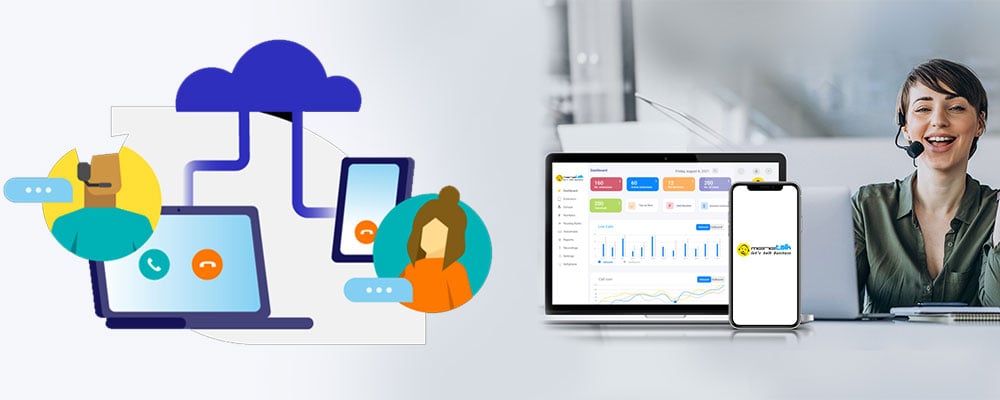If you’re a business owner, you likely know the advantages of using VoIP technology in your day-to-day operations. But if you’re new to the world of cloud-based communication, you might be wondering what exactly a VoIP number is and how to get one for your business.
So what is a VoIP number? Essentially, it’s simply a phone number that uses the internet rather than traditional landline infrastructure. This means that instead of being linked with specific physical equipment (such as copper wires or fiber optics), your VoIP number can easily be used from any device connected to the internet – including cell phones and laptops.
And because these numbers are so easy to move around, they can be incredibly cost-effective compared to traditional landline phone numbers.
In this guide, we’ll take a closer look at how VoIP services work, the different types of VoIP numbers available for businesses, and how you can get up and running with your own cloud-based phone system. We’ll also discuss some of the most common VoIP frauds currently on the rise, as well as five tips to help protect your business from being targeted.
So if you’re ready to learn more about what it means to have a VoIP number and how you can get started using cloud-based communication in your business today, let’s dive right in!
What Is VoIP?
VoIP (Voice over Internet Protocol) is a technology that allows you to make phone calls using an internet connection instead of a traditional landline.
This means that with VoIP, you can use your existing broadband internet connection to place and receive phone calls – without having to install any new hardware or software. And because VoIP uses your internet connection, it’s often much cheaper than traditional landline service.
Additionally, VoIP offers a number of features and benefits that landlines simply can’t match. For example, many VoIP providers offer call forwarding, caller ID, voicemail, and even fax services as part of their basic package. Plus, with VoIP you can often add additional lines or extensions as your business grows – without having to re-wire your office or sign a new contract.
Types of VoIP Numbers
There are two main types of VoIP numbers: toll free and local.
Toll free VoIP numbers are often used by businesses that want to provide their customers with a free way to reach them. These numbers typically begin with 800, 888, 877, or 866, and they can be dialed from anywhere in the country without long distance charges.
Local VoIP numbers, on the other hand, are tied to a specific geographic location. This means that if you have a local VoIP number, anyone who calls it will be charged for a local call, even if they’re located across the country (or even internationally).
To get either type of VoIP number, you’ll first need to set up an account with leading business VoIP providers UK. Once you’ve done this, you can choose your desired number and begin using VoIP service for your business.
How to Get Started with VoIP Services?
Now that we’ve answered the question “what is a VoIP number,.
How to Get Started With VoIP Services for Your Business
If you’re ready to start using your own cloud-based phone system in your business, it all starts with signing up for a plan through a service provider. The exact process will vary depending on which company you choose, but in general, here’s what you can expect:
Step 1: Select a VoIP Plan
First, you’ll need to select the VoIP plan that’s right for your business. Most providers offer a variety of plans with different features and pricing, so take some time to compare your options and choose the one that best meets your needs.
Step 2: Choose Your Phone Number
Once you’ve selected a plan, you’ll need to choose your phone number. Many providers will give you the option to keep your existing landline number or select a new one, so decide which option is best for you.
If you decide to keep your existing number, be sure to have it ported over to your new service before canceling your old landline service.
Step 3: Set Up Your VoIP Hardware
Next, you’ll need to set up your VoIP hardware. Most providers will send you a pre-configured VoIP phone or adapter that you can plug into your existing broadband router. However, in some cases, you may need to purchase your own VoIP-compatible hardware.
If you’re not sure what type of hardware you need, contact your provider for assistance.
Step 4: Install the Software
Once your hardware is set up, you’ll need to install the software. Again, most providers will send you everything you need, but in some cases, you may need to download it from their website. Once the software is downloaded and installed, you’ll be ready to start using VoIP.
Step 5: Take Advantage of Additional Features
Many providers offer additional features that can help make your VoIP service even more effective for your business. Some popular options include call forwarding, voicemail transcription, and automated greetings and menus. Take some time to explore the different options available so that you can get the most out of your new service.
With these steps, you should be able to set up and use your own cloud-based phone system in no time at all – minimizing costs while boosting functionality for your business. So what are you waiting for? Sign up with menetalk – leading business VoIP providers UK




